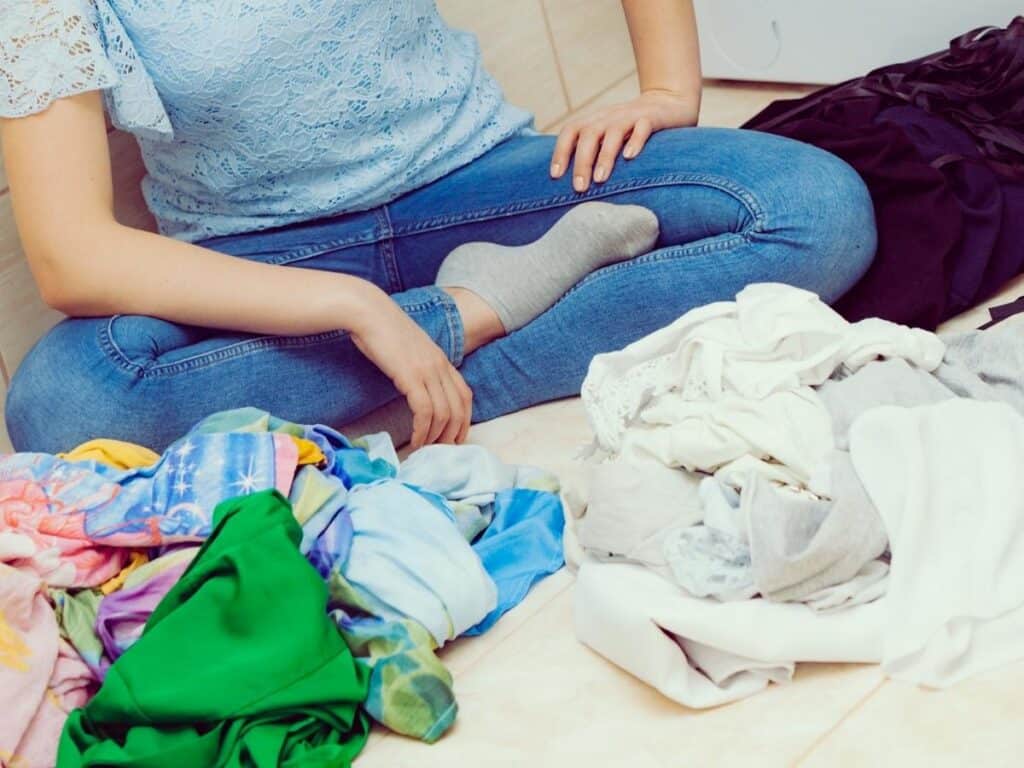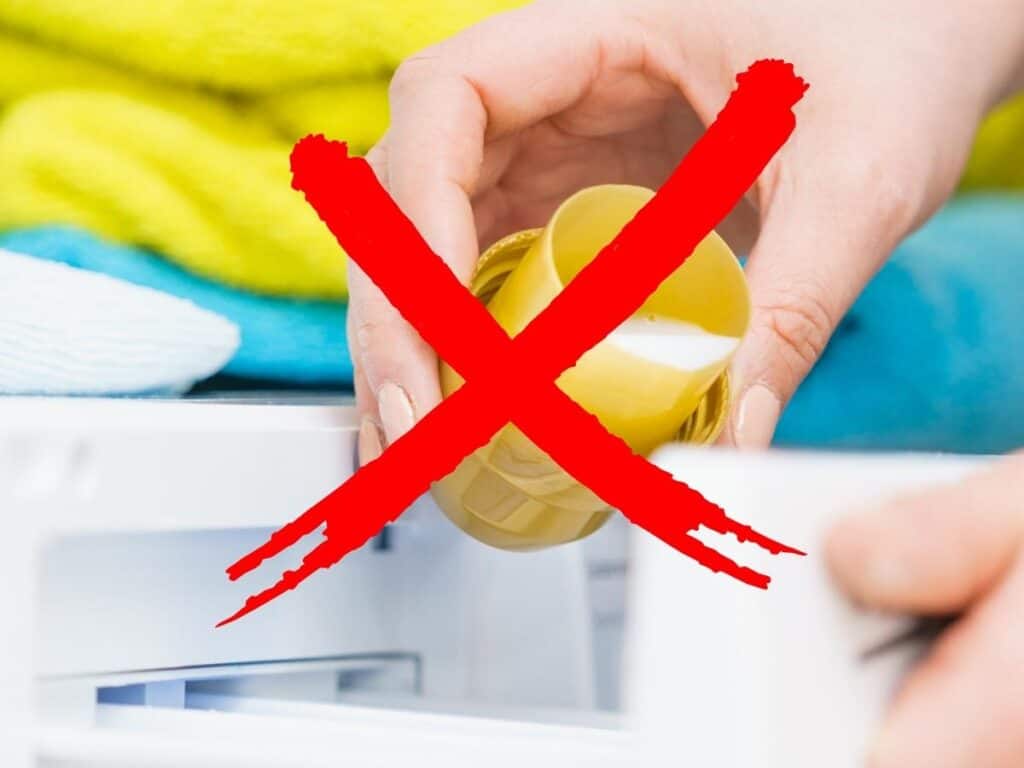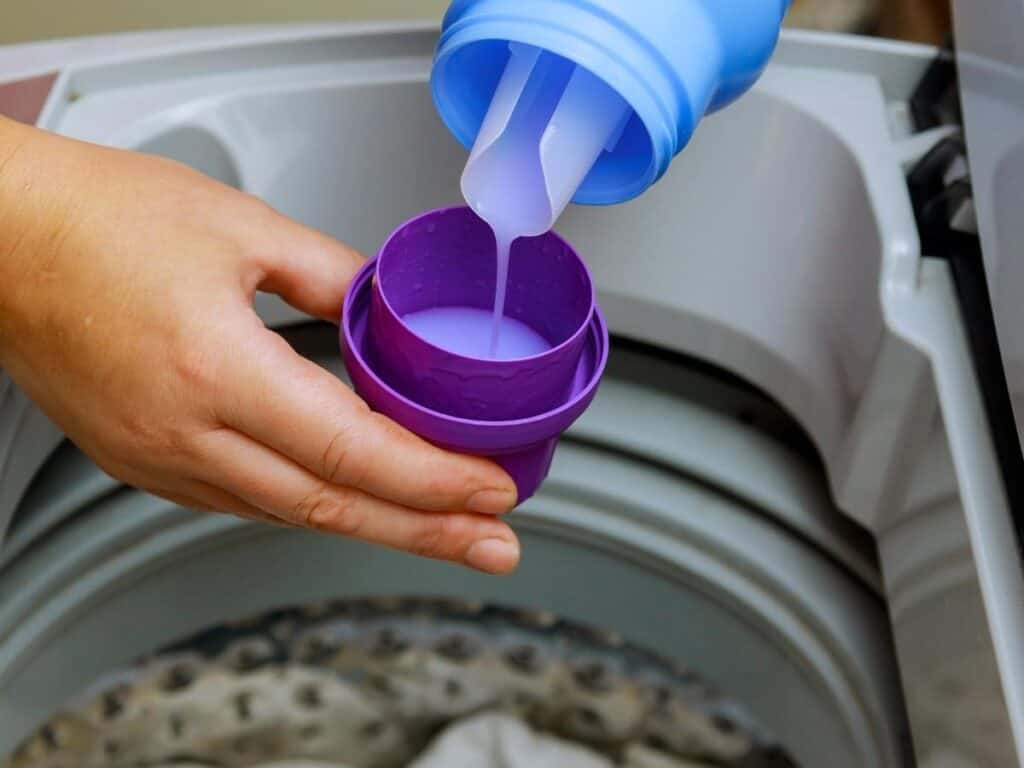The benefits of adding fabric softener to your clothes as you clean them in the washer are numerous. Fabric softener makes the clothes softer, reduces wrinkling and static, minimizes wear and tear, and gives your clothes a sweet, fresh fragrance. The way you add fabric softener to the washer may differ from one washer to the other.
Here’s how to add fabric softener to the washer in three steps:
- Sort the clothes.
- Measure the correct amount of fabric softener for your load.
- Add the fabric softener to the washer at the appropriate time.
The steps above are just a summary of adding fabric softener to the washer. If you would like to learn the details of how to add fabric softener to the washer, keep reading.
Sort the Clothes

It’s essential to sort the clothes before adding fabric softener to the washer. You shouldn’t use fabric softener on some clothes because of the materials that make them; using fabric softener on such clothes could damage them.
When Should You Not Use Fabric Softener?
Below are some items that don’t react well with fabric softener:
- Microfiber: Microfiber is supposed to absorb water. Fabric softeners leave a silky film on the microfiber item’s surface, and the silk film can affect the absorbency of the item. Some of the chemicals in the fabric softener could also jeopardize the microfiber’s static properties.
- Wool: Fabric softener can damage woolen fabrics because some of the softeners’ chemicals make the material lose its fluffiness and flatten. The fabric softener causes the wool fibers to pill in the long run, thus affecting their quality and shortening their life.
- Towels: Towels should be absorbent, just like microfiber. It’s alright to use fabric softener on towels to make them fluffy and soft. However, when you use fabric softener on towels too often, the silky film also remains on their surface, which could affect their absorbency.
- Water Repellent Fabrics: Fabric softeners could alter the fibers in water repellent fabrics and thus affect the material’s ability to repel water. It is, therefore, better not to use fabric softeners on water-repellent clothes like raincoats.
- Athletic wear: The materials used in most athletic wear have water-wicking qualities; they keep you cool and remove the sweat as you work out. Using fabric softener on athletic wear could affect their water-wicking ability leaving you sweaty and with an unpleasant smell.
Measure the Correct Amount of Fabric Softener for Your Load

The package of the fabric softener usually has a dosing cup with lines to help you measure the amount you’ll add to the washer. The box also has instructions on the millimeters of softener you should use per laundry load. In most washers, you classify the laundry load size in the following way:
- A small load: The load is small if you have a few items that fill approximately 1/3 of the washer.
- A medium load: You have a medium load when the washer is half full.
- A large load: You have a large load when the washer is three-quarter full.
Using the correct amount of fabric softener for your laundry load is vital. It might not rinse out thoroughly if you add too much fabric softener. The fabric softener left on the clothes could stain the clothes and ruin them, or it could irritate your skin. In addition, the fabric softener could build up in your washer and eventually damage it.
On the other hand, using too little fabric softener may not have the desired effects. Your clothes might therefore remain rough, clingy, and not smell as good as they should.
Add the Fabric Softener to the Washer

Adding Fabric Softener to Top-Load Washer With Automatic Fabric Softener Dispenser
- Open the washer’s door and open the fabric softener dispenser compartment.
- Put the fabric softener you had set aside into the dispenser compartment.
- Dilute the softener by adding some water up to the fill-line in the dispenser.
- Click the automatic fabric softener setting; although a washer with an automatic fabric softener dispenser releases the softener automatically, you have to set it.
- Load the laundry you had selected earlier into the washer.
- Run your wash cycle in the usual way without any worries.
Adding Fabric Softener To Front Load Washer With Automatic Fabric Softener Dispenser
- Pull the fabric softener dispenser drawer slowly, making sure to pull it until it stops.
- Locate the slot for the fabric softener and pour the fabric softener you had measured earlier into the space.
- Add some water to the fabric softener until the mixture reaches the maximum fill-line; the water dilutes the fabric softener.
- Close the drawer carefully so that your mixture doesn’t spill.
- Set the washer to an automatic fabric softener setting to release it when the time comes.
- Load the clothes you had selected earlier into the machine.
- Start the wash cycle as you usually do; the machine will dispense the fabric softener at the appropriate wash cycle.
Adding Fabric Softener to the Top-Load Washer Without a Fabric Softener Dispenser
- Load the clothes you had selected earlier into the washer.
- Start the wash cycle as you usually do.
- Stop the machine when the wash cycle is over.
- Open the door and pour the fabric softener you had measured earlier into pockets of water in the washtub. By doing so, the water dilutes the fabric softener so as not to stain the clothes.
- Depending on the model, select the fabric softener rinse or deep/power rinse option.
- Close the washer and let the rinse and spin cycle continue as normal.
Doing so is only possible with a top-load washer. In other words, you cannot pause the wash cycle or open the door of a front-load washer once the wash cycle has started.
When to Add Fabric Softener
The point at which you add the fabric softener to the washer varies depending on your type of washer.
The timing is vital when it comes to adding fabric softener to the washer. If you add the fabric softener to the washer too soon in the wash cycle, it gets washed off before it penetrates the clothes. So it’s only a waste of softener as you won’t achieve the desired results.
On the other hand, if you add the fabric softener to the washer too late in the wash cycle, the machine won’t rinse out the softener thoroughly from the clothes.
As a result, your clothes may end up irritating you, smelling bad, or the softener could even stain them, thus ruining them.
Washer With Automatic Fabric Softener Dispenser
This kind of washer has an automatic, designated fabric softener dispenser. When you add the fabric softener to the designated place, the dispenser automatically releases the softener at the right time. So, you do not have to worry about the appropriate time to add fabric softener to the washer.
After the washer completes the wash cycle, it drains out the water, and the machine then starts the rinse cycle; the wash tub fills with water for rinsing the clothes. During the rinse cycle, the washer automatically releases the fabric softener through the dispenser. The water in the tub dilutes the fabric softener before distributing it through the clothes.
When the rinse cycle is over, the washer drains the water and runs a spin cycle to squeeze water out of the clothes. And at the end of it all, your clothes smell fresh and are soft to the touch.
Washer Without a Fabric Softener Dispenser
Some washers don’t have fabric softener dispensers, depending on the model of the machine. However, that doesn’t mean that you cannot use fabric softeners while using these washers. You can add the fabric softener to the washer manually at the right time so long as the washer is a top-loader.
The washer should also have a fabric softener rinse option or deep/power rinse on the settings. You have to time carefully so that you don’t add the fabric softener to the washer too early or too late in the wash cycle.
The best time to add fabric softener to a top-load washer without a dispenser is just before the rinse cycle. You, therefore, have to be very attentive so that you don’t miss your opportunity to add the fabric softener to the washer. Consequently, you cannot afford to take a nap or go for a walk when the washer is on.
Where to Add Fabric Softener on Top Loader and Front Loader
There are mainly two types of washers with automatic fabric softener dispensers when it comes to washers with automatic fabric softener dispensers. The location of the fabric softener dispensers may differ depending on the model of the washer. Below are short descriptions of the two types of washers:
Top-Load Washer With Automatic Fabric Softener Dispenser
The door of a top-load washer is at the top of the machine; you can therefore open the washer’s door and add some clothes in the middle of the wash cycle. You can also stop the washer in the middle of a wash cycle. Some top-load washers have an agitator that takes quite a bit of space; the machine might thus take smaller loads.
The location of the automatic fabric softener dispenser on a top-load washer may differ depending on the model of the machine. In some models, it is inside the washer, at the top of the central column in the drum. In other models, the dispenser is in a special cup in the middle of the agitator.
Front-Load Washer With Automatic Fabric Softener Dispenser
The front-load washer door is at the side of the machine, so you cannot add clothes or stop the washer in the middle of a wash cycle. The washer has no agitator, so you can load more clothes than you can with the top load washer. Front-load washers are more modern than top-load washers and have more advanced features.
Most front-load washers have automatic fabric softener dispensers. In most front-load washers, the fabric softener dispenser is in a compartment drawer on the top left side of the washer. The compartment has well-labeled slots for detergent, bleach, and fabric softener.
Where to Add Fabric Softener if There is No Dispenser
If your washer does not have a fabric softener dispenser, you can add the softener manually immediately after the wash cycle. You should add the fabric softener into the pockets of water in the washer’s tub. When the washer’s drum spins during the rinse cycle, the water dilutes the softener before it comes into contact with the clothes.
When using a top-load washer without a dispenser, you have to pause the machine after the wash cycle, open the door, and add the fabric softener. After adding the fabric softener, you should allow the washer to continue running to perform the rise and spins cycles.
Adding fabric softener to a front-load washer would be difficult without a fabric softener dispenser. However, as mentioned, if a washer does not have a fabric softener dispenser, you have to add the softener manually at the end of the wash cycle.
So, doing so might not be possible when using a front-load washer. You cannot pause the wash cycle or open the door of a front-load washer once the wash cycle has started.
Can You Put Fabric Softener Directly on Clothes in the Washer?
You shouldn’t add the softener liquid directly to the clothes as this could stain them since they contain strong chemicals. Instead, you should add the softener in pockets of water in the washtub so that the water can dilute the softener before it comes into contact with the clothes.
Final Thoughts
I hope the tips in this post answered your questions about how to add fabric softener to the washer.
Remember, if your top-load washer doesn’t have a fabric softener dispenser, you should add the fabric softener before the rinse cycle. On the other hand, suppose your top-load or front-load washer has an automatic fabric softener dispenser. In that case, you should add the fabric softener before the wash cycle.
Next, you can learn how to add laundry detergent to your washing machine or learn more about the 3 different slots here.

I’m an expert wardrobe organizer and a bit of a clean freak. I created this website and its YouTube channel to share practical guides about laundry and organizing. My teachings have been featured in multiple large news publications, and I’ve self-published two wardrobe organizing books and an entire course on the subject.
